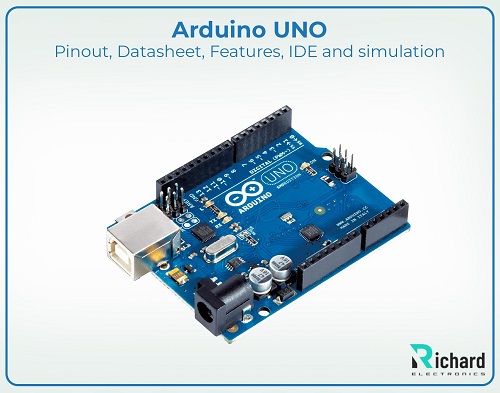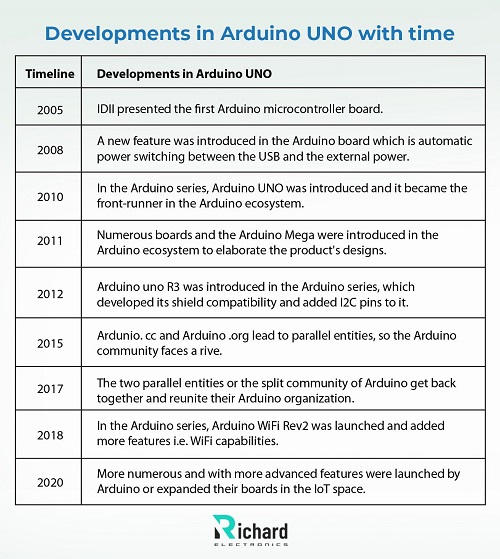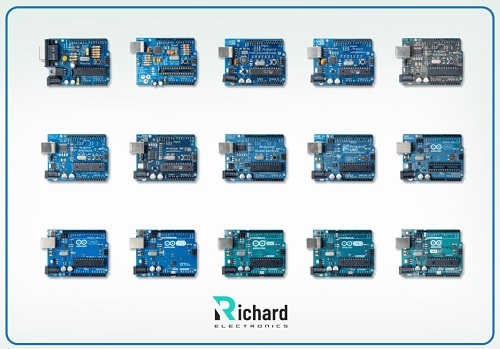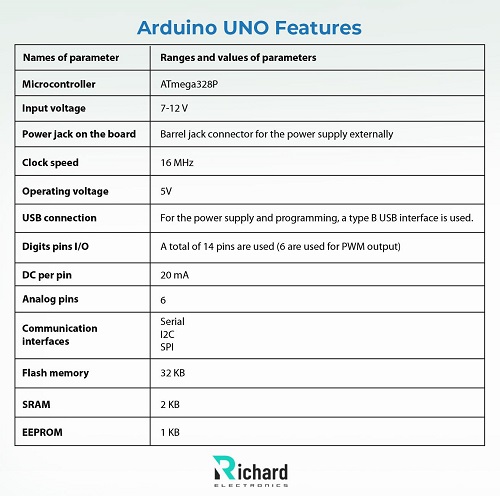Arduino UNO: Pinout, Datasheet, Features, IDE and simulation
Arduino UNO (A000066) is equipped with an Atmega328 microcontroller, a USB interface, 6 analog pins, and 14 digital pins. It supports communication protocols such as SPI, serial, and I2C. In this detailed guide, we will explore the Arduino UNO, covering its pinout, features, simulation, datasheet, and programming environment (IDE).

History of Arduino UNO:
The development of the Arduino Uno began in 2003 at the Interaction Design Institute Ivrea (IDI) in Italy. Professors and students recognized the need for an easy-to-use, affordable microcontroller board to develop embedded prototypes. In 2005, David Cuartielles, Tom Igoe, Massimo Banzi, and Gianluca Martino started working on designing a new microcontroller board named “Arduino.†The main goals were:
â—Â Plug and play board. (Driver installation required)
â—Â Easy to program.
â—Â Useful for both beginners and advanced users.
â—Â Affordable.
â—Â Compact design.
Developments in Arduino UNO over time:

|
Timeline |
  Â
2005 |
IDII introduced the first Arduino microcontroller board. |
|
2008 |
A new feature was introduced, allowing automatic power switching between USB and external power. |
|
|
2010 |
Arduino UNO became the leading board in the Arduino ecosystem. |
|
|
2011 |
Numerous boards and the Arduino Mega were introduced in the ecosystem. |
|
|
2012 |
Arduino Uno R3 was released, improving shield compatibility and adding I2C pins. |
|
|
2015 |
Arduino.cc and Arduino.org split into parallel entities, causing a community divide. |
|
|
2017 |
The two communities reunited under one organization. |
|
|
2018 |
Arduino WiFi Rev2 was launched, adding WiFi capabilities. |
|
|
2020 |
More advanced boards were launched in the IoT space. |

Arduino UNO Features:
Arduino Uno is an open-source microcontroller board based on the Atmega328P. It's widely used by students, designers, hobbyists, and beginners for various electronics projects. With 14 digital pins, 6 analog inputs, and support for multiple communication protocols like Serial, I2C, and SPI, it's ideal for applications in robotics, sensor networks, and IoT. Key features include:

|
Names of parameter |
      Ranges and values of parameters |
|
Microcontroller |
ATmega328P |
|
Input voltage |
7-12 V |
|
Power jack on the board |
Barrel jack connector for external power supply |
|
Clock speed |
16 MHz |
|
Operating voltage |
5V |
|
USB connection |
Type B USB for power and programming |
|
Digits pins I/O |
14 pins (6 for PWM output) |
|
DC per pin |
20 mA |
|
Analog pins |
6 |
|
Communication interfaces |
Serial I2C SPI |
|
Flash memory |
32 KB |
|
SRAM |
2 KB |
|
EEPROM |
1 KB |
Snow & Ice